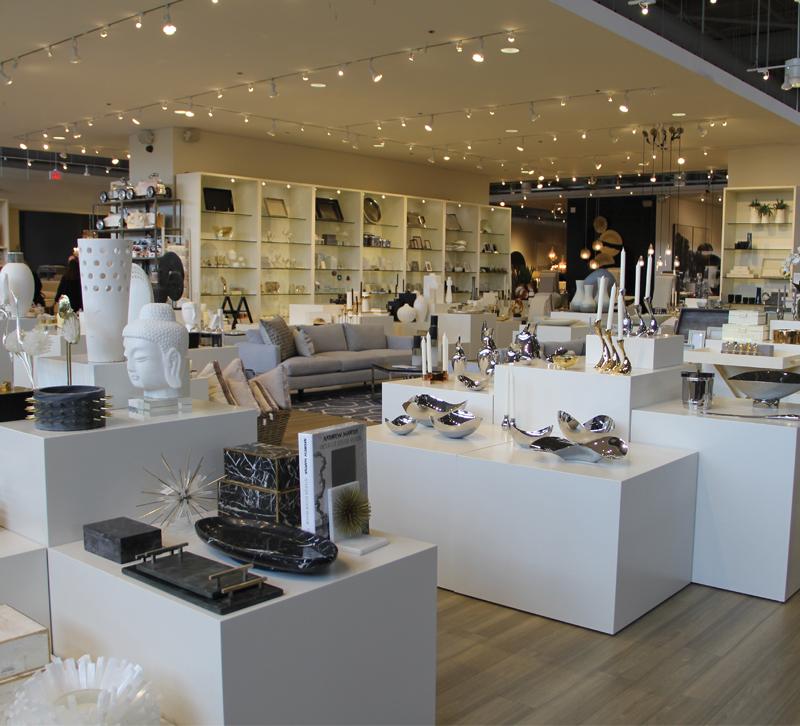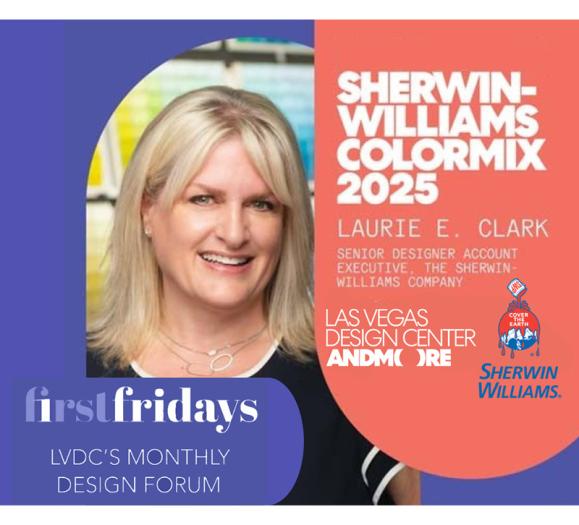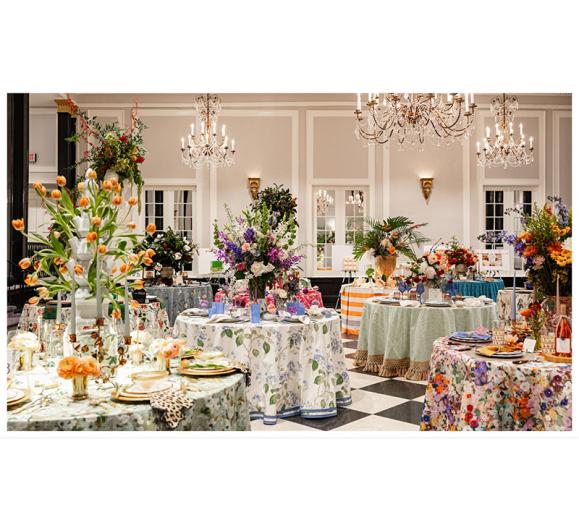ELTE
In 1944, Leon Tenenbaum fled Paris. With the ongoing Nazi occupation of the city, Tenenbaum left his home furnishings store Etablissments Elte (established in 1919) and traveled with his family to Canada. Throughout this difficult ordeal, Tenebaum’s entrepreneurial spirit never waned, and he soon opened ELTE & Sons on Toronto’s Bay Street.
Since the company’s beginnings and its rebirth in Toronto, ELTE has grown and changed in unexpected and innovative ways, acquiring bath and lighting store Ginger’s and opening the “affordable luxury” ELTE Market, but the goal of the company remains the same as it was in 1919: to bring unique home furnishings from around the world and offer them in one location.
Today, Tenenbaum’s vision stands in the hip design district of Toronto in three separate, but neighboring, showrooms. The largest, simply called ELTE, serves as the heart and hub of the company, which remains family-owned to this day.
“Roughly one in a million companies make it to 100 [years] and one in a billion make it to 200,” Head Buyer and Tenenbaum’s great-grandson Andrew Metrick says. “Perhaps this is a lofty target and one that neither I nor Jamie [ Rug Buyer and General Manager] will be around to see, but we like the notion that a forward-thinking goal such as this helps align our day-to-day decisions as a company.”
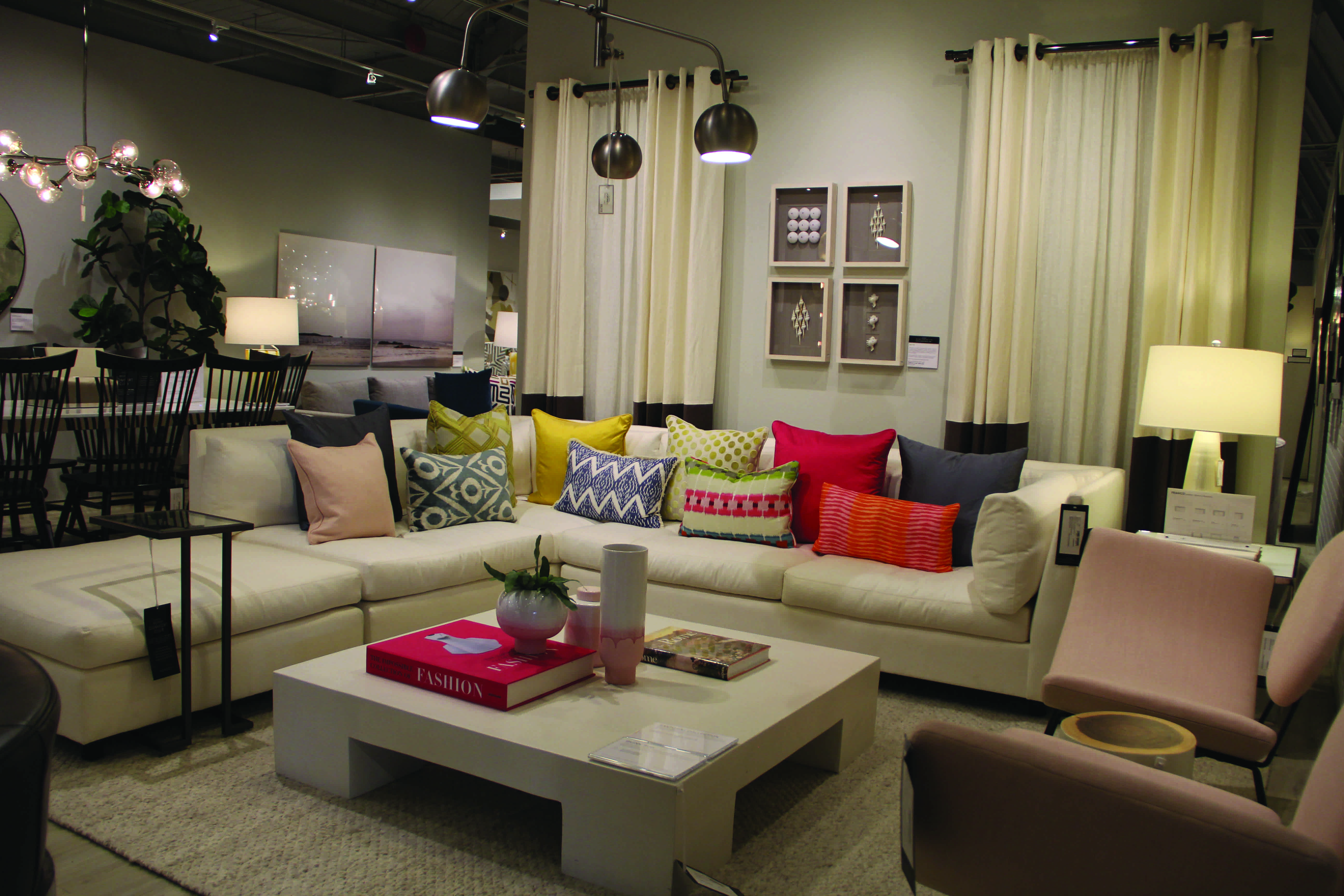
Spanning 150,000 square feet, ELTE may appear cavernous from the outside, but the shiny accessories sitting on bright white pedestals in the front of the showroom engage visitors right as they walk in. To the immediate right, visitors can check out ELTE’s extensive rug collection. To the left, bedding awaits. Behind the main counter and beyond lies a series of vignettes featuring lines like Mitchell Gold + Bob Williams, Hickory Chair, Baker Furniture and Visual Comfort, among others, all designed to entice visitors and implore them to sit and experience.
In retail, ELTE straddles a tough line. Half of its clients are consumers designing their own homes, and the other half are designers working on multiple homes at once. The ELTE team values both types of buyers, but when it comes to designing the showroom and staffing it, the interior designers’ needs take center stage.
“A retail customer’s buying for their own home, which means it’s very possible that you don’t see them again until they decide to move or redecorate,” Metrick explains. “An interior designer is constantly sourcing home furnishings for multiple clients year round, which means above great products and service, they need a relationship with a reliable sourcing partner.”
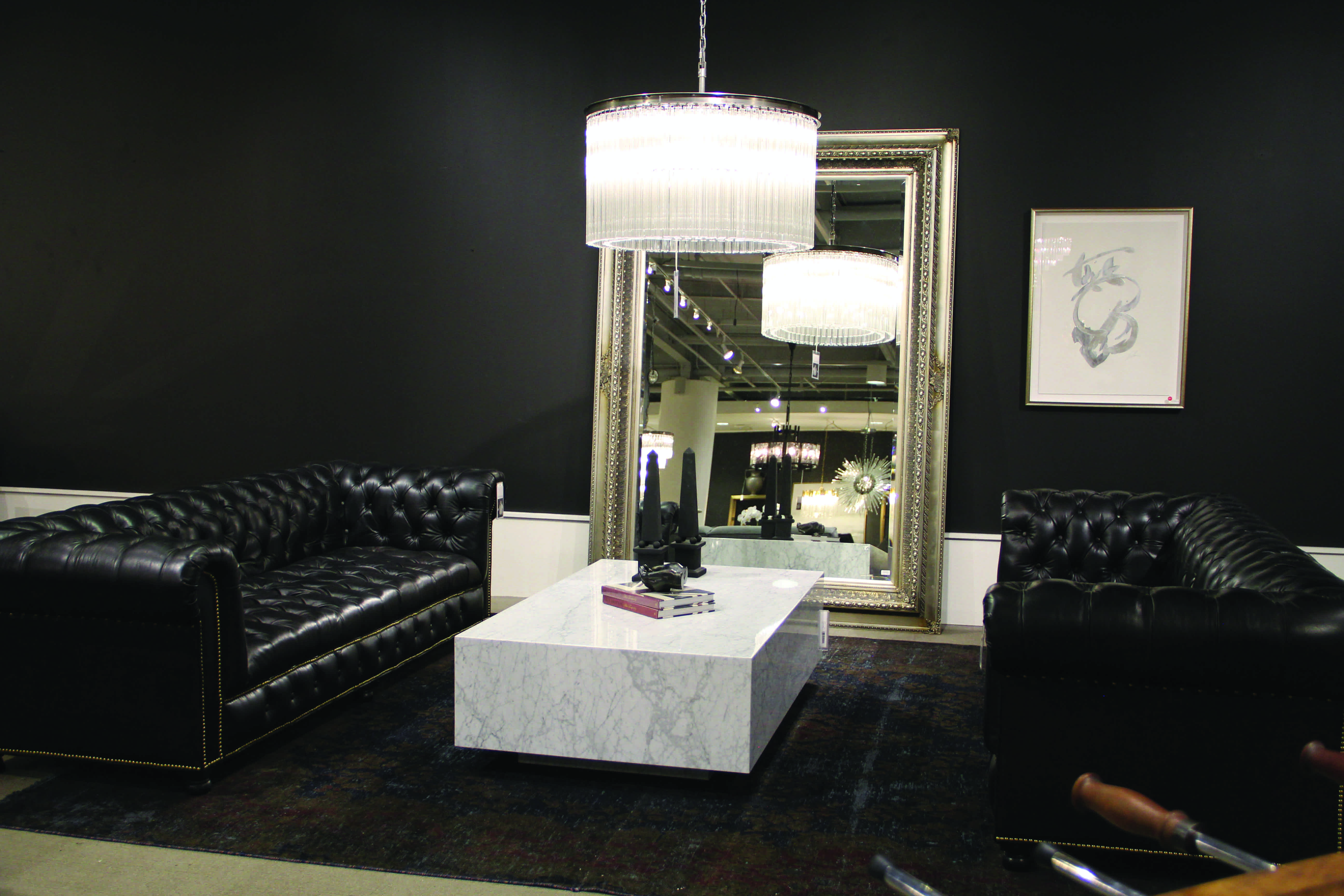
To better assist designers, Metrick says each designer is assigned to a specialized product expert in each category the showroom carries. This ensures the designer always has an expert on hand to answer questions and assist as needed. The showroom also offers exclusive brands, original ELTE designs, products sourced directly from the factory and thousands of in-stock items ready to be delivered in less two days.
That’s not to say ELTE ignores consumer needs. The showroom has customer service desks throughout, so someone will always be nearby to answer questions and gives consumers access to product experts who work in different departments. ELTE also beat Restoration Hardware to the punch when it opened a restaurant in its showroom nearly 20 years ago, and the restaurant — now a cafe — may be the showroom’s best tool for helping consumers.
Metrick and his team know their customers can get overwhelmed, not only by the size of the showroom, but also by furniture shopping in general — especially those clients without a designer.
For clients feeling anxious, overwhelmed or even a little frustrated, the cafe offers a reprieve, and it might save a few sales. In large showrooms like ELTE, consumers who have been there for more than an hour might leave feeling worn out and hungry, promising to come back after lunch, but once they’ve had a bite and time to assess whether they want to face the seemingly endless showroom again, they might decide not to return at all.
ELTE’s cafe curbs this problem, offering consumers food, beverages and a comfortable place to sit and think. They feel less pressure to make a fast decision when their stomachs are growling and can take the time to think things through. For designers, the cafe serves as a meeting spot to go over what the client has seen and make decisions over a cup of coffee.

Though ELTE offers products in all furniture and lighting categories, the showroom is best known for its rug department, which takes up nearly an entire side of its showroom. With its rugs, ELTE carved out a niche market for itself and today continues to go after consumers and designers looking for that high-quality option.
“Virtually every one of our rugs is designed in house and sourced directly from the artisans who produce them for us,” Metrick says. “This process gives us a unique position in the marketplace from a design, quality and value perspective.”
The stories that Metrick and his team are able to tell about their rugs connect with both traditional and trade buyers, and now more than ever, ELTE’s customers seem hungry for more stories. As the company celebrates its 100th anniversary next year, Metrick will be rethinking how to use the showroom in new and innovative ways and how to reach the consumer wherever he or she may be.
“When you want your business to last another hundred years, you align your short-term goals accordingly so that they may echo into the future. We have a number of incredible things in the works and we’ve never been more excited about what we’re doing and the path we’re on.”
Union Lighting & Furnishings
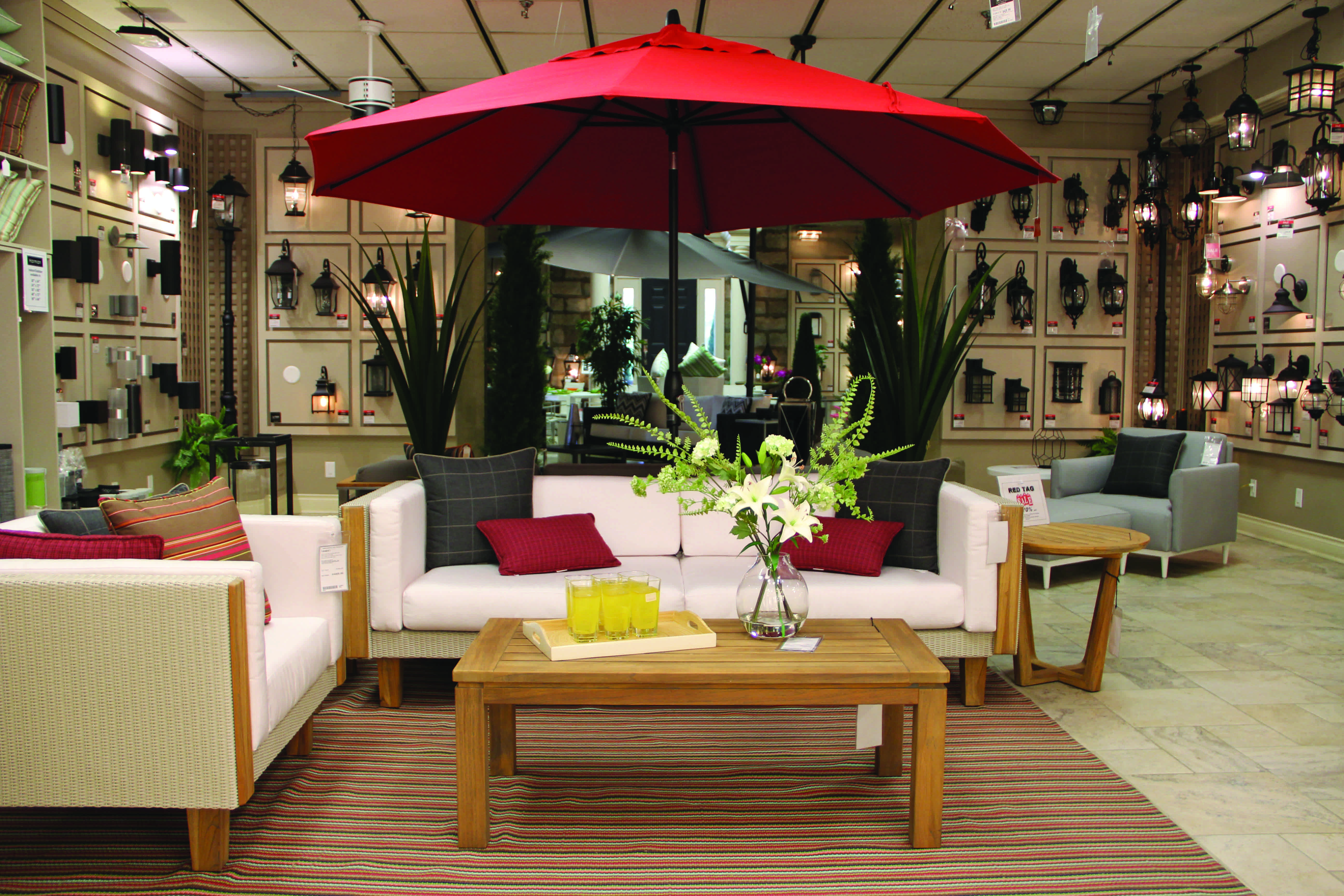
Union carries every style of lighting fixture and some matching furniture.
Visual Comfort, Caracole and Bernhardt perform well.
A beautiful lighting showroom will dazzle customers, but what happens when the dazzling effect leaves them lost in a sea of bath bars? If the showroom happens to be Union Lighting & Furnishings, Canada’s largest lighting showroom, the answer isn’t to downsize. Just provide a map.
At 110,000 square feet, 115 employees, hundreds of fixtures and floors filled with furniture, Union may seem intimidating from the outside, but inside, the lights shine brightly. In Toronto, where city officials are trying to control the too-hot housing market (the average home costs about C$765,270 or $580,890 USD), Union has its work cut out for it in attracting new business and keeping itself one step ahead of its competition.
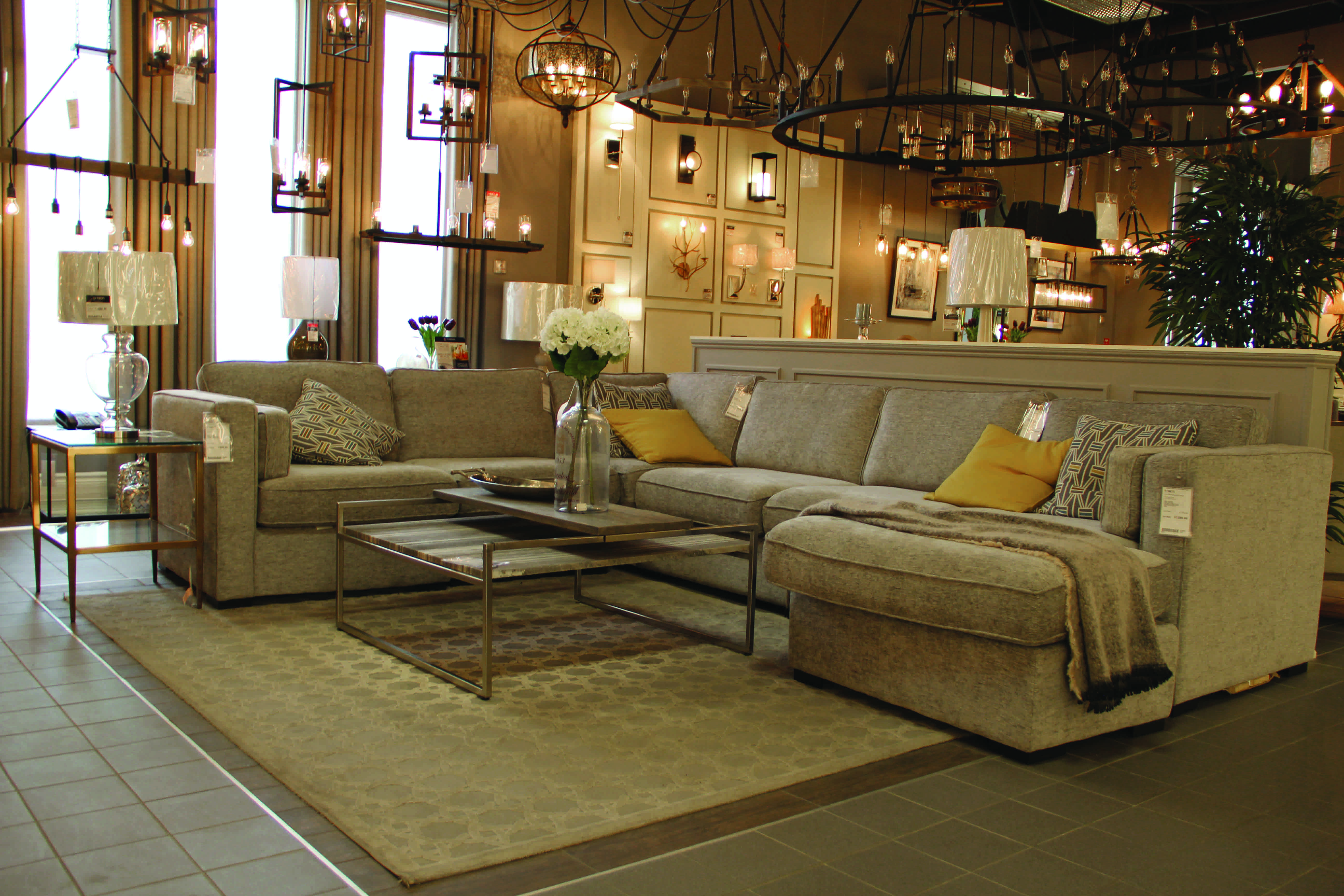
Like many other showrooms in North America, Union struggles with internet competition. The showroom has an extensive website, offering all types of lighting and home furnishings online, and when customers in the store show the same product at a lower price online on their phones, Mark Naimer, President of the company since he bought it in 1993, says they price match without hesitation. Fortunately though, most consumers don’t recognize brand names in the lighting industry, and Naimer has a few tactics to deter showrooming shoppers. Lighting fixtures shown on the website do not name the manufacturer or list the SKU number, which hinders some customers in their price-matching search. In the showroom, the merchandising team groups products by style, rather than manufacturer, for the most part, so customers have a harder time showrooming on the spot.
“People are shopping like crazy right now, so we have to protect ourselves,” Naimer says.
Rather than just focusing on protectionist strategies, Naimer looks for opportunities to set the showroom apart from its competition, and that’s where the Pickle Program comes in. Every new hire at Union goes through the Pickle Program, and its implementation reminds employees in all departments to go the extra mile for customers, doing something a little extra to make their experience with Union more memorable and pleasant. Rather than saying “no” automatically to a customer’s request, the goal is to find a way to say “yes.”
That’s why the toilet paper in the bathroom is always folded after the room is cleaned, just like hotels do in their guest bedrooms. When it’s snowing, Union has someone to brush the snow off customers’ cars before they leave. If it’s raining outside, a Union employee will escort the customer to his or her vehicle holding an umbrella, and if the customer is so inclined, he or she can take the umbrella too.
“I think its extraordinarily beneficial. It does cost a lot of money and time,” Naimer admits, “but like anything in life, if you don’t put in, then you’re not going to get the results.”

The success of the Pickle Program, of course, depends on the employees, and Naimer counts himself fortunate to have such a low turnaround rate with his staff. Most have been with the company for more than 20 years, and even those with shorter tenures have been working for the company for five-plus years. Ongoing training and good communication between departments keeps everyone on the same page and stop one department from dumping on or blaming another.
Each month during one week, employees attend mandatory training meetings — there are usually 10 of the same meetings held to accommodate everyone’s different schedules and shifts — and someone from every department must attend the different meeting times. Naimer says this improves communication and gives departments the chance to work together to solve problems one department may unknowingly be creating for another. The meetings often result in new practices and new strategies to make the customer service experience better.
“Service is everything,” Naimer says. “That’s why people ask us to match web pricing. That’s why people buy from us and not other people because we have five trucks on the road. I’ve got a service man on the road. I have a whole team on the road just doing defects.”

Not every new hire takes to the Pickle Program immediately — and Naimer says those employees usually take themselves out eventually — and the company relies on employees who have more than just sales experience. Having a design background has become just as important. While Union works with local designers, the company also partners with a local college to give design students part-time jobs in the showroom while they’re still taking classes. The students get hands-on experience working in a design-related field, and some even stay on and take full-time jobs. Those that go on to work for design firms often come back and work with Union for their projects.
For all the positives that Union has going for it, Naimer remains cautious in his optimism for the future. Though the company has no debt and owns the building, price increases due to tariffs could affect the business. At press time, Canada, the U.S. and Mexico reached a new trade agreement, now called the United States-Mexico-Canada Agreement, but the U.S. tariffs on Canadian steel and aluminum remain in effect, as well as Canada’s retaliatory tariffs on U.S. goods. Toronto politicians have also worked to cool the housing market, but Naimer says they haven’t thought about what to do to ensure the market doesn’t slip too far in the opposite direction.
But Naimer and his team will press on. As the winter markets come around, Naimer will be reevaluating the lines his showroom carries. Union has already started paying more for U.S.-made upholstered goods, and paying more for lighting may cause him to drop a few lines and buy more from Canadian companies. The company also has a major renovation in the works: adding another story to its showroom.
“We’re not sitting back,” Naimer insists. “We’re still doing smaller projects and renovations, but we’ve got to do something. One thing that people in the industry know is that we’re always doing something, and it keeps it fresh. It keeps us interesting.”



